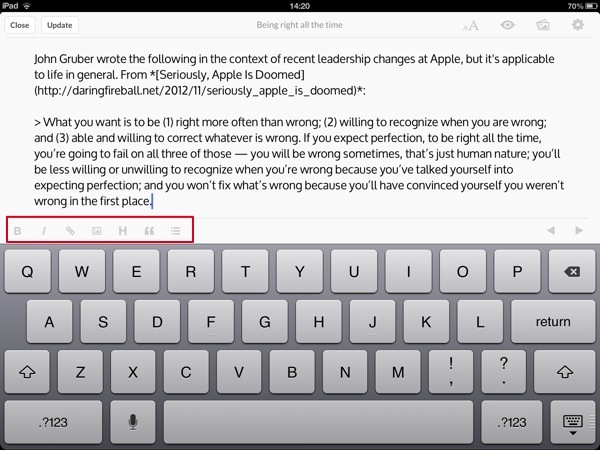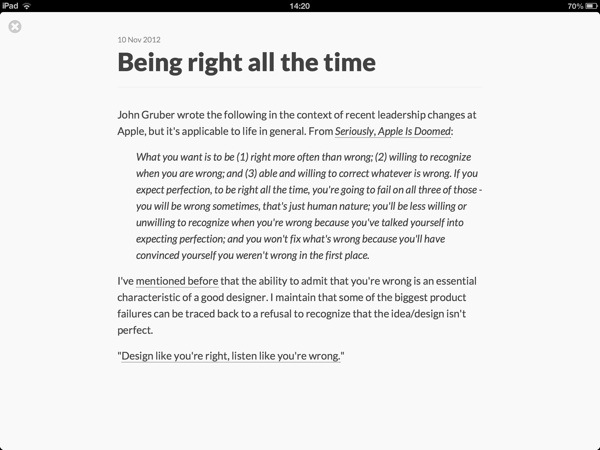Stephen Hackett’s Parenting Technology is a haunting piece of writing for The Magazine. I don’t want to give the story away, so I’ll just quote a couple of key paragraphs:
How many little moments have I missed in my kids’ lives by checking Twitter on my iPhone while they play in the yard? How many hours have I spent writing or hacking away on my Web site while I should have been reading books to Josiah?
Technology saved my son’s life, yet has left him with terrible scars. It allows me to work from the hospital on days when I need to, but distracts me from being engaged at home. Technology is wonderful, but terrible, all at once.
How we deal with that balance — with what technology wants — remains one of the biggest struggles of our time.

